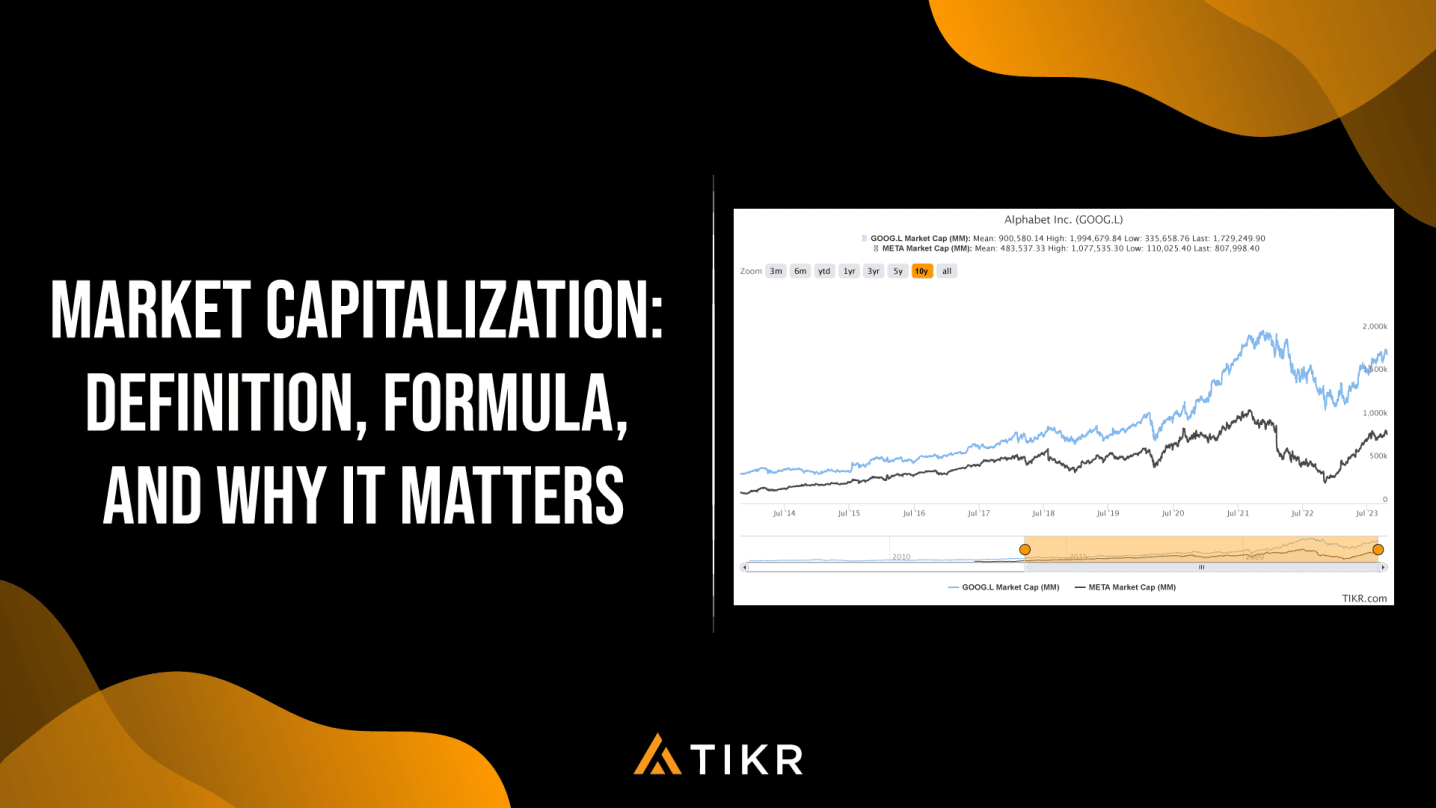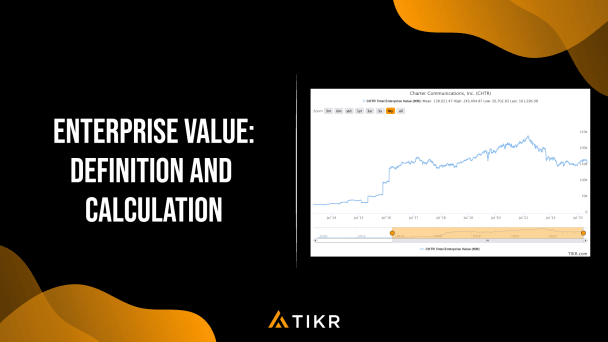Long-term investors often look at various valuation metrics when deciding whether to invest in a particular company. One helpful metric to evaluate is market capitalization or market cap.
Market capitalization is a measure of the total value of a company’s outstanding shares of stock. It is calculated by multiplying the current market price of one share by the total number of outstanding shares. Since a company’s share price determines market cap, it represents the perceived value that investors assign to a company’s equity rather than its book value.
How to Calculate Market Cap
Calculating market capitalization is a straightforward process. It involves two key components: the current stock price and the total number of outstanding shares.
Here’s the market capitalization formula:
Market Cap = Current Stock Price × Total Outstanding Shares
For example, let’s say Company XYZ has a current stock price of $50, and there are 1.5 million shares of its stock outstanding. Using the formula, its market capitalization would be $75 million.
It’s important to note that a company’s market cap can change constantly as its stock price fluctuates and as it issues or repurchases shares.
Types of Market Capitalization
Market capitalization categorizes publicly traded companies into different groups based on their total market value. There are five primary categories: mega-cap, large-cap, mid-cap, small-cap, and micro-cap.
Mega-cap
Mega-cap companies are typically the largest and most established players in the market. These companies have a market value of $200 billion or more. There are a handful of mega-cap companies in the S&P 500 Index, and the most popular include tech giants like Apple, Amazon, Microsoft, and Meta.
Large-cap
Large-cap stocks have a market capitalization exceeding $10 billion. These companies often have a long history of stability and success. They’re less likely to experience extreme volatility compared to smaller companies, making them a more conservative investment option.
Investors looking for steady, long-term growth and lower risk often turn to large-cap stocks. These companies typically generate more cash than they need to run their operations and pay dividends to their shareholders.
Mid-cap
Mid-cap companies fall in the middle range, with market capitalizations typically between $2 billion and $10 billion. Mid-cap stocks offer a balance between growth potential and risk. They’re smaller and more agile than large-cap companies, which can lead to faster growth, but they may also be more susceptible to market fluctuations.
Such companies have room for expansion and innovation but have already demonstrated a certain level of stability. Therefore, they often offer moderate risk and growth opportunities.
Small-cap
Small-cap companies have market valuations between $250 million and $2 billion. These companies tend to be younger and less established than large-cap and mid-cap companies. They often have more room for growth but come with higher risk due to their vulnerability to economic downturns and market volatility.
Micro-cap
Micro-caps are companies with less than $250 million in market valuations. These tend to be the smallest companies in the stock market. Therefore, most institutional investors do not focus on the micro-cap market which tends to be too small for their portfolios.
Individual investors may find attractive investment opportunities in the micro-cap space given the lower competition. However, the micro-cap market is littered with low-quality, risky businesses and tends to be the riskiest part of the market. It therefore requires increased due diligence to find the few gems.
Why Market Cap Matters
For beginner investors, market capitalization provides a quick way to gauge the risk associated with an investment. Large-cap stocks are generally less risky, while small-cap stocks tend to be more volatile. Investors can tailor their portfolios to match their risk tolerance by including a mix of large-cap, mid-cap, and small-cap stocks.
Market cap helps investors compare companies within the same sector or industry. For example, comparing Apple (large-cap) to Microsoft (large-cap) and not to a smaller, less established tech company is more meaningful.
Market cap also affects liquidity. Large-cap stocks tend to have higher trading volumes, making buying and selling shares quickly easier without significantly impacting the stock’s price. In contrast, small-cap stocks may have lower liquidity, leading to wider bid-ask spreads and potential difficulties executing large trades.
Limitations of Market Cap
While market cap is a valuable valuation metric, it has its limitations:
- Lack of comprehensive insight: Market cap alone doesn’t provide a complete picture of a company’s financial health, growth prospects, or performance. Investors should consider other factors like earnings, revenue, debt levels, and industry dynamics when making investment decisions.
- Constantly changing: Market cap can change rapidly due to fluctuations in stock prices. A company’s market cap today may not reflect its long-term value accurately. This is actually exactly the goal of a savvy investor – to find stocks where the intrinsic value of the business is greater than the price in the market today.
- Size doesn’t equal quality: Just because a company is large-cap doesn’t mean it’s a good investment. It’s essential to conduct thorough research and due diligence before investing, regardless of a company’s market cap.
Savvy investors know that attractive investment opportunities can be found in any market cap category as long as the intrinsic value of the stock is much greater than the market price. They use a variety of financial metrics in addition to market capitalization, such as the P/E ratio, Free Cash Flow, and Return on Invested Capital, when evaluating company valuations.
Final Thoughts
Market capitalization is a valuable measure that provides insights into a company’s size, risk profile, and investment potential. Understanding the various categories of market cap can help you make informed decisions that align with your financial goals and risk tolerance.
However, it’s crucial to remember that market cap is just one piece of the puzzle. To make well-informed investment decisions, consider a broader set of factors, including a company’s financial performance, industry trends, competitive positioning, and management quality. TIKR.com can help you perform a more comprehensive analysis of these factors when evaluating 100,000+ stocks globally. Get started for free today!





